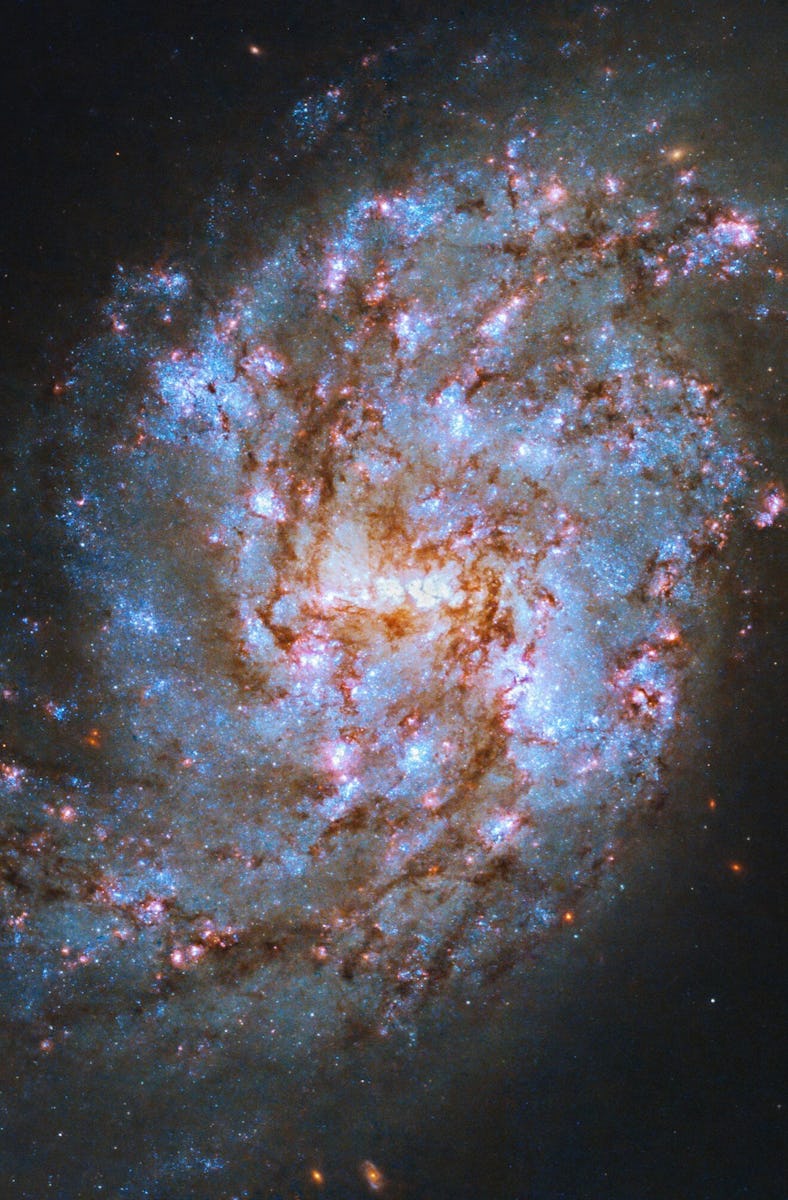Hubble Just Snapped A New Image Of A Galaxy Literally Bursting With Stellar Nurseries
NGC 1087 is doing its own thing, and astronomers want to understand it better.

The Hubble Space Telescope just shed new light on a star formation in an unusual little galaxy.
NGC 1087 doesn't quite fit the galactic mold. Like about two-thirds of spiral galaxies (including our own), NGC 1087 has a bar-shaped structure stretching across its center. In most barred spiral galaxies, the bar is an older neighborhood full of gracefully aging stars. But NGC 1087's bar is bright and busy, full of young stars and growing stellar nurseries. A new image from the Hubble Space Telescope may help astronomers understand why.
Most of the intricate barred spiral structure in NGC 1087 seems to come from its dark lanes of dust and cold gas, rather than the brightly-glowing stars and hot gas that shape most galaxies — just another way this galaxy is a little different.
This Galaxy Is Weird But Cool
The odd little galaxy gets most of its structure from lanes of dust and clouds of cold, clumpy hydrogen gas — the dark red patches in this image, dotted with the brilliant pink of new stars bursting to life. Massive, hot-burning stars blaze blue-white in between the darker dust lanes. Astronomers hope this image, and the raw data behind it, can help them understand how young stars, with their powerful radiation and stellar winds, affect the clouds of cold gas around them.
Eventually, images like this one may also explain another of NGC 1087’s quirks: For a galaxy whose disk spans 87,000 light-years across, its bar seems oddly short, and its nucleus is quite small.
Hubble observed NGC 1087 in the wavelengths of light our eyes can see, but also in the slightly longer wavelengths of infrared light (which are great for looking deep into cold clouds of gas and dust) and the slightly shorter wavelengths of ultraviolet light. To create an image that we can actually see, image processors at the Space Telescope Science Institute had to match particular wavelengths of infrared and ultraviolet light to colors in the visible spectrum. The process is a blend of art and science.